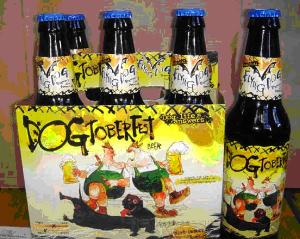Please click
TomVolkFungi.net for the rest of Tom Volk's pages on fungi
 After 117 (One hundred seventeen!) Fungus of the Month pages and nine years' worth of October fungi, it's getting more difficult to come up with a good October fungus. I've done all the obvious ones already, including the Halloween fungi: Jack-O-Lantern Mushroom, Omphalotus olearius or O. illudens; Claviceps purpurea, cause of the plant disease ergot and likely factor in the Salem Witch Trials; Tremella mesenterica, witch's butter; Hygrocybe conica, the witch's hat mushroom; Monotropa uniflora, the ghost plant, aka Indian Pipe; Hydnum umbilicatum, the sweet tooth mushroom; and Lactarius rubidus, candy caps. I have also had a fungus for Oktoberfest, Hemitrichia serpula, the pretzel slime mold. So, what should I choose for this October's fungus?
After 117 (One hundred seventeen!) Fungus of the Month pages and nine years' worth of October fungi, it's getting more difficult to come up with a good October fungus. I've done all the obvious ones already, including the Halloween fungi: Jack-O-Lantern Mushroom, Omphalotus olearius or O. illudens; Claviceps purpurea, cause of the plant disease ergot and likely factor in the Salem Witch Trials; Tremella mesenterica, witch's butter; Hygrocybe conica, the witch's hat mushroom; Monotropa uniflora, the ghost plant, aka Indian Pipe; Hydnum umbilicatum, the sweet tooth mushroom; and Lactarius rubidus, candy caps. I have also had a fungus for Oktoberfest, Hemitrichia serpula, the pretzel slime mold. So, what should I choose for this October's fungus?
La Crosse, Wisconsin is the home of one of the largest and best Oktoberfest celebrations in America. However, in many parts of the country they celebrate something called Dogtoberfest. Somewhere I had heard the word "Dogtoberfest" in conversation, so I decided to google "Dogtoberfest" and found over 12,000 entries! Wow! I'm on to something here I guess. Most of the Dogtoberfest pages describe festivals for people and their dogs-- or in many cases, a kind of beer. You can do the search on your own. So I knew I had to come up with a dog-related fungus for this month. I had already had the dog turd fungus, Pisolithus tinctorius, as fungus of the month, so I decided to make the dog stinkhorn, Mutinus caninus, this month's fungus.
I probably get more email about stinkhorns in people's yards than about any other fungi. Most people don't seem to like them-- something about the smell. Go figure. I already have a page about Dictyophora duplicata, the netted stinkhorn. This page also includes information about other stinkhorns, but I decided to make a page just for Mutinus, the dog stinkhorn.
Here's a typical email:
 "Hi Tom,
I have beauty bark that has the white webbed fungis under the top layer of beauty bark. It has some disgusting mushroom fruit that looks like a dog d*ck with the tip dipped in sh*t. I am entirely serious. It's growing in the beauty bark of the home I just bought. What kind of shroom is that? I imagine that I will need to remove all the bark to eliminate the spidering fungis.
I've been stepping on the shrooms, but in researching shrooms, I've decided to start pulling them up in a garbage bag and throwing them away.
/signed/ Mushroom hater
I wrote back: "There's no way to get rid of them." I also referred him to my page on stinkhorns.
He wrote back: "How can there be no way to be rid of them????? I sprayed the fruit with poison. Then chanted Die Die Die!"
|
 Mutinus caninus, the dog stinkhorn, in honor of Dogtoberfest
Mutinus caninus, the dog stinkhorn, in honor of Dogtoberfest
 Mutinus caninus, the dog stinkhorn, in honor of Dogtoberfest
Mutinus caninus, the dog stinkhorn, in honor of Dogtoberfest